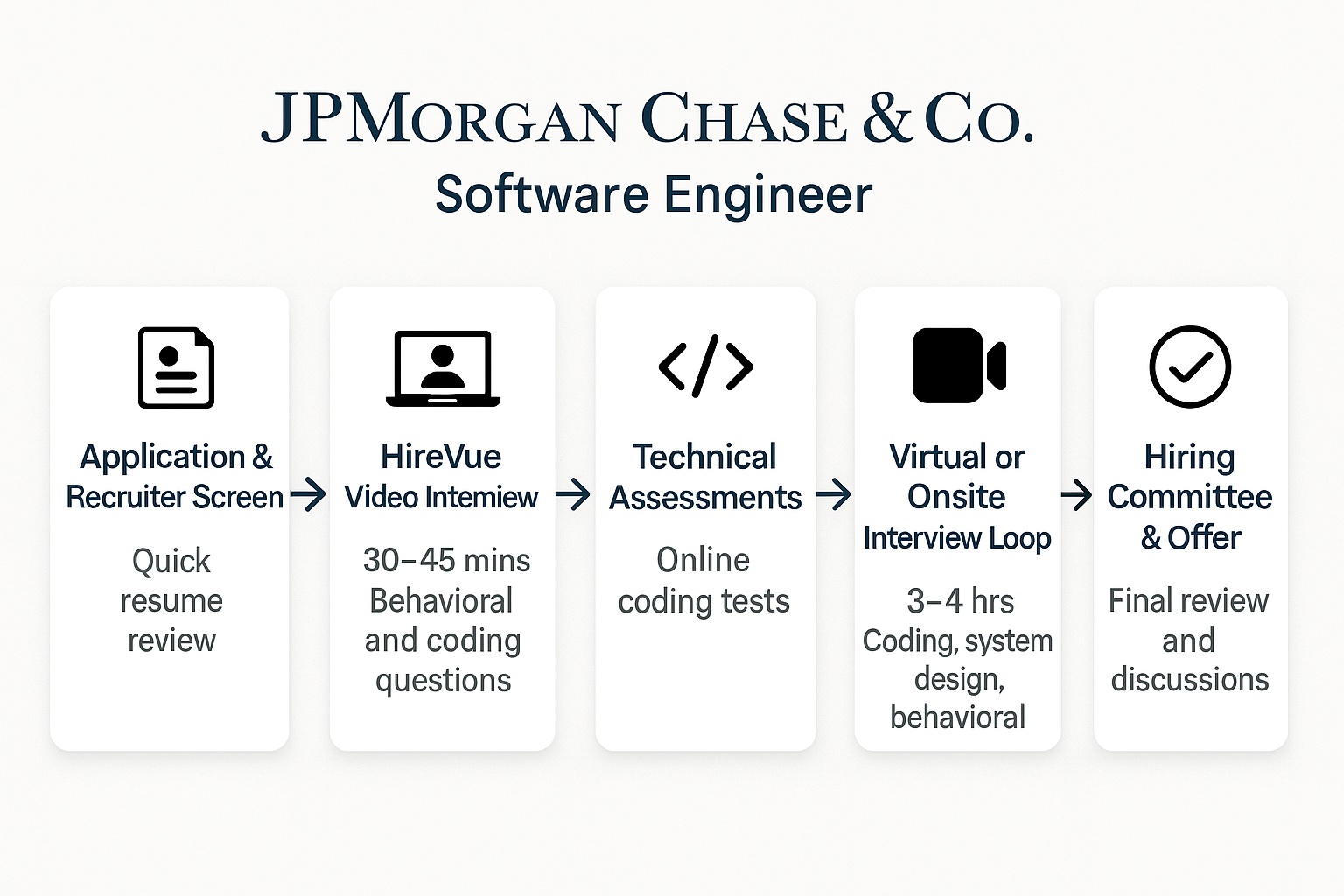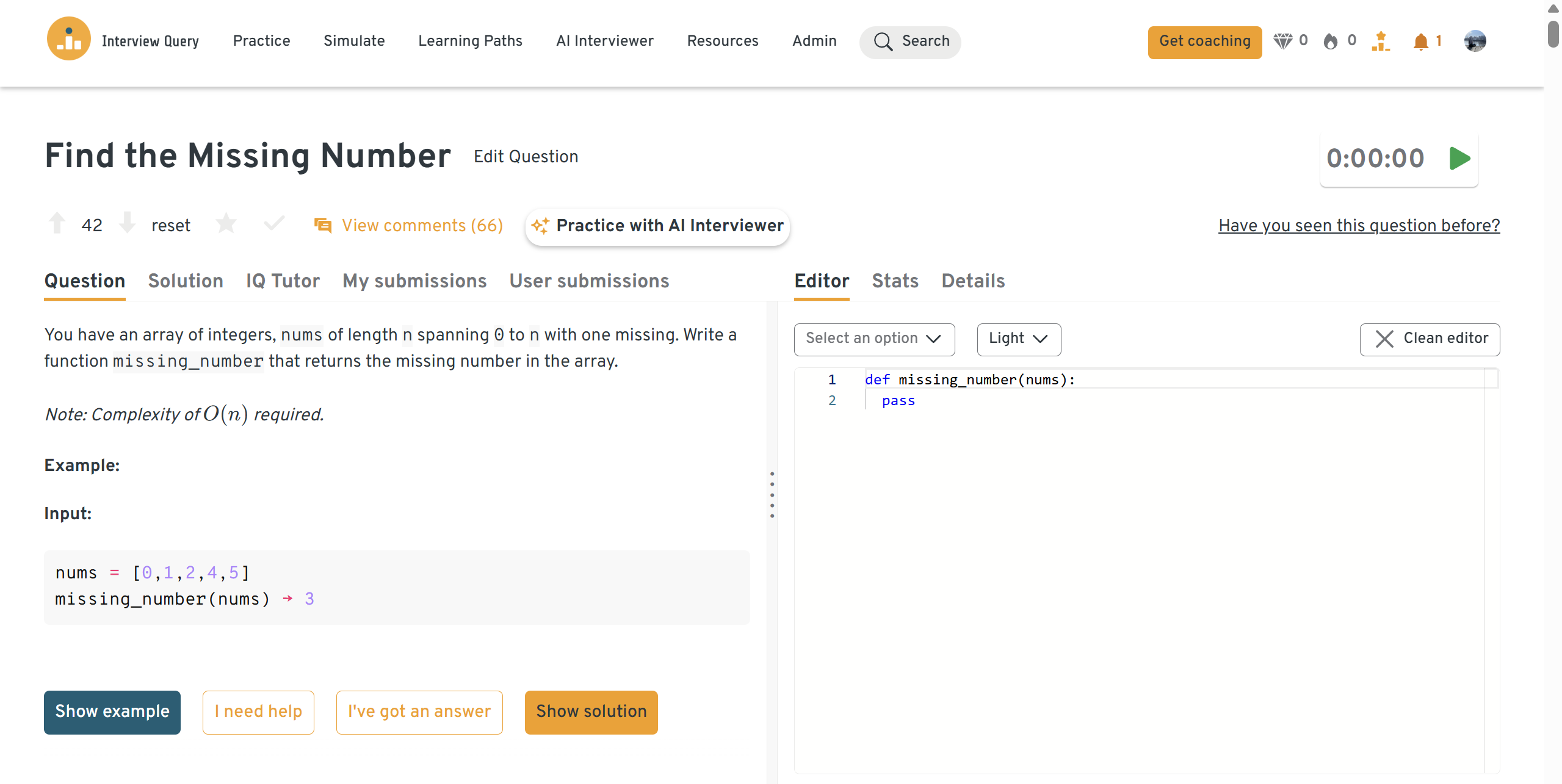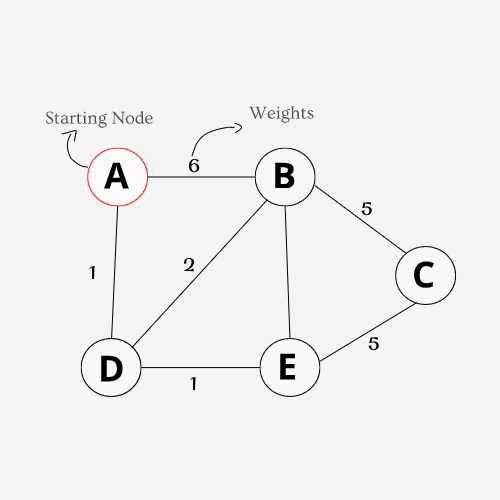JP Morgan Software Engineer Interview Guide (2025): Process, Questions & Prep Tips
Introduction
The JP Morgan software engineer interview process is more relevant than ever in 2025, a year when the bank has broken its own records and accelerated its transformation. Fueled by strategic bets on U.S. equities and global growth, the bank reported $14.6 billion in Q1 profits and an 18% return on equity firmwide. Even amid routine workforce reshuffles, its long-term investments in AI, software, and emerging markets are paying off. From a $17 billion tech budget to a 15% jump in assets under management, the numbers reflect a company evolving with clarity and ambition.
This interview guide you are reading gives you a clear roadmap from application to offer. You will see how the interview process actually works, what each round evaluates, and the skills that matter most for success. We break down the online assessment, HireVue, live coding, system design, and behavioral rounds, then map sample questions to the patterns JP Morgan favors. You will also get a focused preparation plan that covers coding drills, design frameworks, and STAR stories, along with practice resources you can act on today. By the end, you will know what to expect, how to structure your answers, and how to walk into every stage confident, prepared, and ready to show real impact.
Why this role at JP Morgan?
Behind the scenes, JP Morgan’s software engineers are driving much of this success. They are building the tools that power smarter client insights, faster transactions, and scalable global platforms. Whether you are an early-career coder in a two-year rotational program or a senior architect optimizing cloud infrastructure, the scope of ownership is massive. With over 1,000 AI use cases targeted and proprietary tools boosting output across teams, JP Morgan offers a rare blend of enterprise scale and innovation velocity for engineers looking to make an impact.
Software engineering at JP Morgan combines global scale with practical innovation. You build platforms that serve millions of customers, power markets, and support critical risk and payments systems. Early-career engineers accelerate through structured programs and rotations that expose them to core stacks like Java, Python, cloud, and data platforms. As you grow, you can specialize as a senior or staff engineer in areas such as low-latency trading, distributed systems, developer tooling, or applied AI, or you can move into engineering management if you enjoy leading teams and delivery. Internal mobility is a real path, since teams hire across lines of business, and engineers often take on new domains without leaving the firm. The result is a career track with breadth, mentorship, and increasing ownership, where strong execution translates into visible impact and long-term growth.
What is the interview process like for a software engineer role at JP Morgan?
The JP Morgan software engineer interview process is structured yet flexible, designed to test both your technical skill and ability to thrive in a large-scale, fast-moving environment. Most candidates complete the process in three to six weeks, progressing through assessments that evaluate problem-solving, collaboration, and long-term potential. Each stage focuses on a specific capability, from coding fluency and analytical thinking to communication, teamwork, and adaptability.

The JP Morgan software engineer interview process is structured yet flexible, designed to test both your technical skill and ability to thrive in a large-scale, fast-moving environment. Most candidates complete the process in three to six weeks, progressing through assessments that evaluate problem-solving, collaboration, and long-term potential. Each stage focuses on a specific capability, from coding fluency and analytical thinking to communication, teamwork, and adaptability.
What questions are asked in a JP Morgan software engineer interview?
Here are the questions that are often asked in a JP Morgan Software Engineer Interview:
Coding/technical questions
These types of coding questions are commonly asked in JP Morgan interviews to assess a candidate’s problem-solving skills, understanding of array manipulation, and ability to write efficient, bug-free code under time constraints:
Find the missing integer from an array of consecutive integers
To find the missing number in an array of consecutive integers, calculate the expected sum of numbers from 0 to n using the formula ( n(n+1)/2 ). Subtract the sum of the given array from this expected sum to find the missing number. Go to Interview Query’s dashboard to check out the full solution!

-
To solve this, iterate through the array and collect all non-zero elements in a new list. Then, append the appropriate number of zeros to the end of this list to maintain the original array’s length.
-
To determine if two strings are anagrams, you can sort both strings and compare them. If the sorted versions of the strings are identical, then the strings are anagrams of each other.
Given a list of strings, write a function that returns the longest common prefix
To solve this, start by comparing the characters of the first string with each of the other strings, character by character. Stop when a mismatch is found or any string is exhausted, which will give the longest common prefix.
Find the longest increasing subsequence in a list of integers.
To solve this problem, iterate through the list while maintaining a dynamic programming array that stores the length of the longest increasing subsequence ending at each index. Update this array by comparing each element with previous elements and updating the subsequence length accordingly. The maximum value in this array will be the length of the longest increasing subsequence.
-
To solve this problem, iterate through the list of stock prices while keeping track of the minimum price encountered so far and the maximum profit that can be achieved by selling at the current price. Use a brute force approach to test all possible buy/sell combinations and choose the one that yields the most profit. Alternatively, a recursive approach can be used to improve computational efficiency.
Implement Dijkstra’s shortest path algorithm for a given graph with a known source node.
To implement Dijkstra’s algorithm, initialize the shortest distance to the source node as zero and all others as infinity. Use a priority queue to explore the graph, updating the shortest path to each node as you go, and keep track of the previous node for each node to reconstruct the path.

Tip: Treat these as logic and clarity tests, not speed races. JPMorgan interviewers watch how you structure your thoughts and communicate trade-offs. Always restate the problem in your own words, clarify assumptions, and write clean, modular code with clear variable names. Explain complexity before and after coding, and test edge cases out loud. Even if you forget syntax, reasoning through intent earns credit.
System/product design questions
These system and product design questions are used to evaluate a candidate’s ability to architect scalable, real-world solutions, demonstrate sound data modeling practices, and apply analytical thinking to complex business problems:
Given a dataset of 600,000 credit card transactions, build a fraud detection model
To build a fraud detection model, start by exploring and preprocessing the dataset to handle missing values and outliers. Use feature engineering to create meaningful input features, and then select an appropriate machine learning model, such as logistic regression or a decision tree, to classify transactions as fraudulent or not. Evaluate the model’s performance using metrics like precision, recall, and F1-score, and iterate on the model to improve its accuracy.
Design a database for a ride-sharing app
To design a database for a ride-sharing app, you need to create tables that can record rides, riders, and drivers. The schema should include tables for users, rides, and vehicles, with relationships defined by foreign keys to link rides to both riders and drivers. This setup allows for efficient data retrieval and management of ride-sharing operations.
Design a data warehouse for a new online retailer
To design a data warehouse for a new online retailer, you should start by identifying the key business processes and the data they generate. Then, create a star schema that includes fact tables for sales, inventory, and customer interactions, with dimension tables for products, time, and customers to support efficient querying and reporting.
How would you create a recommendation engine using user and rental data?
To create a recommendation engine for a rental listing website, you can use collaborative filtering or content-based filtering techniques. By leveraging user demographic information, interests, and rental metadata such as amenities and location, the engine can suggest relevant rental units to users. Machine learning models can be trained on historical user interactions to improve recommendation accuracy.
Design a scalable transaction processing system focusing on high-level architecture and performance bottlenecks.
Outline the main system components such as transaction manager, database, and messaging queues. Discuss strategies for consistency, fault tolerance, and scalability. Identify and mitigate common performance bottlenecks.
Tip: Focus on clarity, scalability, and risk control. JPMorgan’s systems run at global scale under strict compliance, so interviewers look for engineers who design fault-tolerant and auditable architectures. Start with requirements and constraints (latency, throughput, data integrity), outline the high-level architecture, then dive into components and trade-offs. Use metrics like uptime, query latency, and cost per transaction to show business awareness. End with how you’d monitor, test, and secure the system.
Behavioral or “culture fit” questions
These behavioral questions are designed to assess how well you align with JPMorgan’s values, like collaboration, accountability, and resilience:
-
At JPMorgan, cross-functional teams often have differing technical perspectives. Use the STAR method to share how you facilitated open dialogue, weighed trade-offs, and built consensus to move the project forward. Emphasize your commitment to respectful collaboration and delivering robust financial technology solutions.
Sample answer: When I was building an internal dashboard to automate monthly reporting, the data science team preferred using a heavy visualization tool, while I proposed a lighter Python-based web app for faster deployment. I understood their concerns about flexibility, so I scheduled a short session where each of us outlined trade-offs in performance, cost, and maintenance. I then created a quick prototype showing how our lightweight framework could meet 90 percent of their needs while cutting runtime by half. After testing, we agreed to integrate one of their preferred libraries into my framework to balance functionality and speed. The project shipped two weeks early and became the model for other analytics dashboards across the department.
Explain how to prioritize and stay organized with multiple deadlines.
In a dynamic environment like JPMorgan, you’ll juggle competing priorities across projects. Discuss your approach to breaking down tasks, setting clear milestones, and using tools like Agile boards or Jira to ensure timely delivery. Highlight how you communicate progress and proactively manage risks to meet business-critical deadlines.
Sample answer: In my previous internship, I supported two concurrent releases: a trading API update and a compliance data refresh. To stay organized, I broke each project into milestones using Jira, tagged tasks by dependency, and set short daily checkpoints with both teams. When the compliance timeline slipped due to data validation, I flagged it early, negotiated a trade-off on lower-priority API testing, and reallocated one QA resource temporarily. Both projects ultimately launched on time, and the managers appreciated that I escalated risks instead of waiting until deadlines were at risk.
-
JPMorgan values professionalism and integrity, especially in high-stakes environments. Share a specific example where you maintained objectivity, sought common ground, and focused on project goals despite personal differences. Explain how you fostered mutual respect and kept the team aligned with organizational objectives.
Sample answer: During a group assignment in university, I worked with a teammate who dismissed feedback and often re-wrote others’ code without discussion. Rather than react defensively, I asked for a one-on-one conversation to understand his reasoning. I learned that he felt the project lacked standards, so I proposed setting up a shared code-review process and agreed that every merge would need two approvals. Once we established rules, collaboration improved, and the final system earned the highest grade in class.
-
Demonstrate your understanding of JP Morgan’s mission, core values, and commitment to innovation in financial services. Tailor your response to show how your skills and experiences align with the company’s culture and technical direction. Mention specific initiatives or technologies at JP Morgan that excite you—such as cloud modernization, AI adoption, or blockchain pilots—but make sure to connect them to the business impact of the specific team you are applying to. For example, if you are interviewing with the payments group, link AI innovation to transaction efficiency; if you are aiming for an infrastructure role, connect cloud investments to system scalability and resilience. Showing this team-level alignment signals that you’ve thought about where you fit and how you will drive tangible outcomes.
Sample answer: JP Morgan combines large-scale impact with a strong culture of innovation. I’m particularly drawn to how the firm applies technology to real financial outcomes—such as its AI-driven risk models and digital payments modernization. My background in backend development and data engineering aligns well with those goals. I’d like to help improve transaction reliability and latency for global clients by building more efficient APIs and monitoring systems. The idea of contributing to technology that safeguards millions of daily transactions excites me, because it merges my technical interests with meaningful real-world impact.
-
JPMorgan interviewers look for self-awareness and a growth mindset. Discuss feedback you’ve received, how you acted on it, and the results. Be candid about a weakness, but focus on the steps you’ve taken to improve and how it’s made you a better engineer and teammate.
Sample answer: Early in my internship, my manager noted that while my code was correct, my pull-request descriptions lacked clarity, making reviews longer. I took that seriously and asked for examples of strong documentation from other engineers. I then adopted a checklist for each PR—purpose, testing, and rollback plan—and began summarizing key design decisions. Within a few weeks, review turnaround dropped by 30 percent, and my manager complimented the improvement.
Tip: Behavioral rounds test ownership, composure, and collaboration under JPMorgan’s culture of accountability. Use the STAR method (Situation, Task, Action, Result) to keep answers structured. Choose examples that show judgment, teamwork, and resilience. Quantify outcomes when possible (“cut processing time by 20%”). Maintain a calm, professional tone—these questions are also checking for communication style, reliability, and ethical reasoning. Reflect on what you learned and how it shaped your current work habits.
How to prepare for a software engineer role at JP Morgan
Preparing for a JP Morgan software engineer interview means balancing technical excellence with strong communication and an understanding of how technology drives finance. The firm looks for candidates who can code efficiently, design responsibly, and thrive in high-stakes, collaborative environments. The steps below will help you navigate your preparation with clarity and focus.
Strengthen your core coding skills
Most technical screens involve Java, Python, or SQL, so focus your practice on these languages. Expect questions around arrays, strings, sorting, dynamic programming, and trees — but with a practical, business context such as optimizing trade matching or transaction validation.
Tip: Practice coding on platforms like HackerRank or Interview Query’s DS & Algo Learning Path. Write and test your code in an IDE to mimic the real environment. Explain your logic out loud, since clear articulation often matters as much as correctness.
Understand JP Morgan’s systems and tech ecosystem
JP Morgan invests heavily in cloud infrastructure, CI/CD pipelines, AI-driven automation, and cybersecurity. Familiarize yourself with their use of AWS, Kubernetes, and internal tools like Athena or Quartz. Reading their Engineering Blog or exploring their GitHub projects will give you context about the tools and priorities shaping their systems.
Tip: Prepare short talking points that connect your past experiences to JP Morgan’s ecosystem. For instance, if you’ve worked with AWS Lambda or Docker, explain how that could contribute to optimizing scalable systems or improving deployment efficiency at the firm.
Review computer science fundamentals and distributed systems
Interviewers often assess your understanding of fundamentals such as data structures, OOP principles, time complexity, and concurrency. For senior roles, questions may extend to threading, message queues, load balancing, and fault-tolerant architecture.
Tip: Use a “concept-to-application” approach. Don’t just memorize definitions — practice explaining how you’ve used these principles in real-world projects. For example, discuss how you handled race conditions or optimized query response time.
Familiarize yourself with finance and risk systems
JP Morgan values engineers who understand how their work connects to trading, payments, or risk systems. You don’t need deep finance expertise, but basic awareness of how technology underpins these functions will make you stand out.
Tip: Learn how core systems like order matching, payment gateways, and fraud detection platforms work. When answering system design questions, frame your examples in the context of reliability, latency, or compliance — the same trade-offs JP Morgan engineers face daily.
Highlight measurable outcomes on your resume
Hiring managers want proof of results, not just responsibilities. Showcase achievements that quantify your impact — like reducing query latency by 30%, improving uptime to 99.9%, or cutting batch processing time in half.
Tip: Use the “impact per line” method: for every project, include one metric that demonstrates efficiency, scalability, or reliability improvements. Recruiters at JP Morgan often skim resumes quickly, so numbers help you stand out.
Prepare for system design discussions
System design rounds assess how you think about scalability, security, and trade-offs in real-world systems. You may be asked to design an API service for a trading platform or a data warehouse for financial analytics.
Tip: Follow a top-down approach: define requirements first, then outline components (databases, load balancers, message queues, and caching). Conclude by discussing risks and how you’d test resilience. If you’re unsure, clarify constraints — it shows structured thinking.
Build and refine STAR stories for behavioral rounds
Behavioral interviews at JP Morgan test your ability to collaborate, stay accountable, and handle ambiguity. Questions often reflect JP Morgan’s core values, such as teamwork, integrity, and drive for excellence.
Tip: Prepare 4–5 STAR (Situation, Task, Action, Result) stories that cover common themes: working under tight deadlines, resolving team conflicts, improving a process, and learning from mistakes. Rehearse these stories so they sound natural, not rehearsed.
Develop your communication and presentation clarity
JP Morgan’s interviewers often evaluate how clearly you explain your logic and how well you can collaborate across functions. Engineers regularly work with product, compliance, and finance teams, so communication is key.
Tip: Practice explaining a technical topic in simple terms, as if you were speaking to a non-technical stakeholder. Record yourself and watch for filler words or overly complex phrasing. Aim for confident, concise communication.
Brush up on security and compliance awareness
Given the firm’s regulatory environment, engineers are expected to design systems that meet security and compliance standards. While the interview won’t test legal details, showing awareness of principles like encryption, access control, and auditability signals maturity.
Tip: When discussing projects, mention how you handled data integrity or user authentication. Even brief mentions of “enforcing role-based access” or “ensuring compliance logging” show that you think beyond just functionality.
Simulate the full interview experience
Rehearse with mock interviews that mirror JP Morgan’s format — coding, system design, and behavioral rounds in sequence. This builds endurance and helps you manage pacing across a 3-hour interview loop.
Tip: Use Interview Query’s Mock Interviews or AI Interviewer to practice both technical and behavioral sections. Record yourself to evaluate tone, structure, and timing. Treat each session like the real thing, including follow-up summaries to build reflection habits.
Stay consistent and confident throughout your preparation
Consistency matters more than cramming. Set a realistic weekly schedule with problem-solving goals, mock interviews, and review sessions. Track your progress and identify weak spots early.
Tip: Create a “prep tracker” with sections for algorithms, SQL, and design. After each study block, rate your confidence level from 1–5 and focus next week’s effort on the lowest scores. This structure keeps your preparation deliberate and measurable.
FAQs
What is the average salary for a software engineer role at JP Morgan?
As of 2025, software engineers at JPMorgan Chase in the United States earn an average total compensation of around US$250,000 per year, though pay varies by city, level, and business unit according to Levels.fyi. Total packages typically include a base salary, annual performance bonus, and stock grants for senior positions.
In major hubs such as New York City, Dallas, Philadelphia, and Columbus, salaries follow a similar tiered structure (Levels.fyi):
- Analyst (502): ~US$96,000–US$120,000 per year — primarily base pay with modest bonuses.
- Associate (601): ~US$120,000–US$156,000 per year — includes ~US$132,000 base and up to US$18,000 in stock or bonus.
- Senior Associate (602): ~US$132,000–US$168,000 per year — higher performance-linked cash bonuses and initial stock eligibility.
- Vice President (603): ~US$180,000–US$216,000 per year — base around US$156,000 plus equity and annual incentive pay.
- Executive Director (604): ~US$276,000–US$384,000 per year — ~US$240,000 base and ~US$120,000 combined in stock and cash bonus.
- Managing Director (605): ~US$648,000+ per year — ~US$336,000 base and substantial performance-based bonuses tied to divisional output.
Average Base Salary
Average Total Compensation
Where can I read more discussion posts on JP Morgan software engineering interviews?
For more discussions on JP Morgan software engineer interviews and relevant experiences, follow our discussion board.
Are there job postings for JP Morgan software engineer roles on Interview Query?
Yes—check out Interview Query Job Board for relevant jobs and beyond.
How long does the JP Morgan interview process take?
The process usually spans 3–6 weeks, depending on role seniority and scheduling. After applying, candidates generally wait 1–3 weeks for the recruiter screen, followed by coding and technical rounds. Offers are often extended within a week of final interviews if the process moves smoothly.
Tip: If your application seems delayed, sending a polite follow-up after 10–14 days is perfectly acceptable. It shows initiative and continued interest.
How difficult are JP Morgan software engineer interviews?
The difficulty level ranges from moderate to challenging. The questions are often practical and business-oriented rather than purely academic. Candidates who focus on problem-solving, clean code, and clear communication tend to do well. JP Morgan values structured thinking and collaboration over trick questions.
What programming languages should I focus on for JP Morgan interviews?
JP Morgan primarily uses Java, Python, C++, and SQL, depending on the team. Java dominates most backend and infrastructure teams, while Python is common in data-heavy and quantitative groups. Reviewing concepts like OOP, data manipulation, and concurrency in your strongest language is more valuable than spreading yourself thin across multiple ones.
What is the timeline between the final round and an offer?
After your final interview loop, most candidates receive feedback within 5–7 business days. The hiring committee reviews the interviewer’s notes and determines the level and compensation. Occasionally, background checks or headcount confirmations can extend this timeline by another week.
What happens if I fail the online assessment or technical interview?
JP Morgan typically enforces a six-month cool-off period before reapplying for the same role. However, you can still apply to a different role or location during that time. Use the waiting period to strengthen weak areas — for instance, by revisiting data structures or refining your communication strategy during coding interviews.
Are JP Morgan software engineering roles remote or hybrid?
Most roles are hybrid, especially in major hubs like New York, London, and Singapore. Some teams require on-site collaboration three days a week, while others allow flexible remote arrangements. Always confirm this with your recruiter, as expectations vary by team.
How can I prepare specifically for the HireVue interview?
Record yourself answering mock behavioral questions using the STAR format. Focus on tone, pacing, and clear articulation. Practice explaining a technical concept in under two minutes — HireVue’s AI model evaluates not just content, but delivery and confidence as well.
Tip: Rehearse in a quiet, well-lit space. Smile, maintain good posture, and treat the session like a live conversation, not a monologue.
Ready to Take the Next Step?
Preparing for a software engineer role at JP Morgan demands more than just technical skill—it requires a clear understanding of the company’s values, systems thinking, and strong communication. Focus on data structures, system design basics, and behavioral prep aligned with their mission of integrity and excellence.
To streamline your prep, explore our Scenario-Based SQL Questions, read Chris Keating’s Success Story for real insights, and follow our step-by-step DS and Algo Learning Path to sharpen your skills. With the right strategy, you’ll be ready to stand out in every round. All the best!


